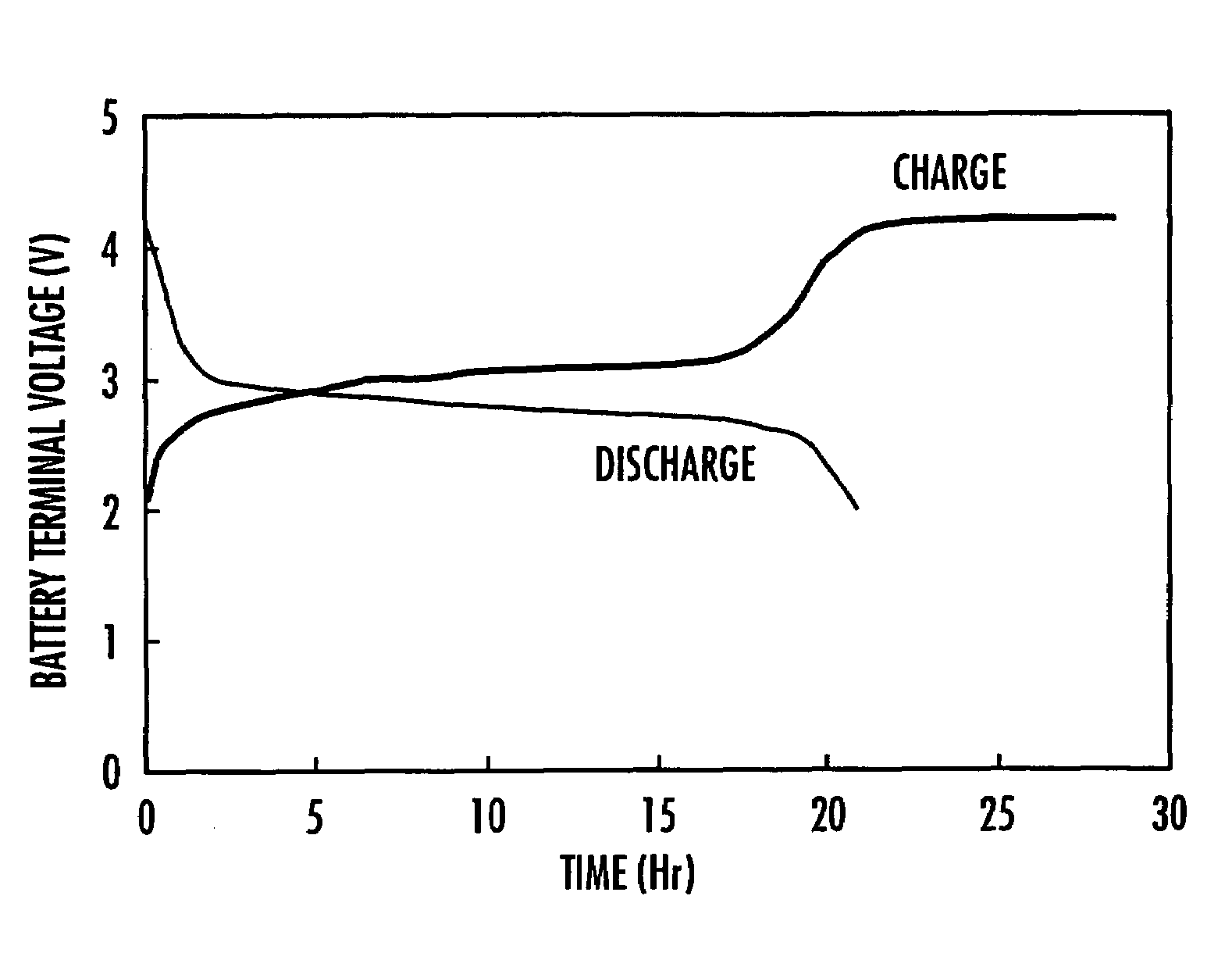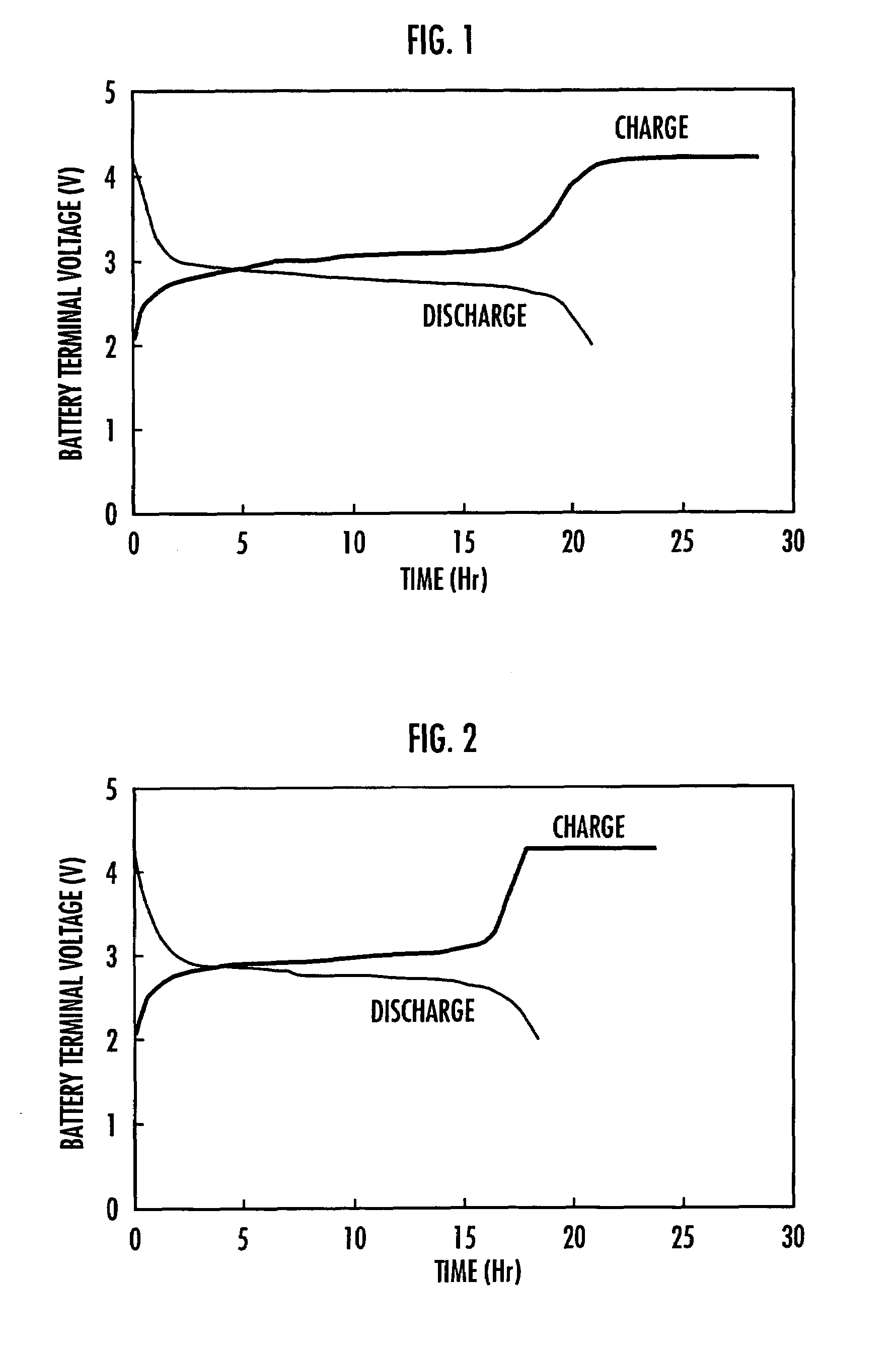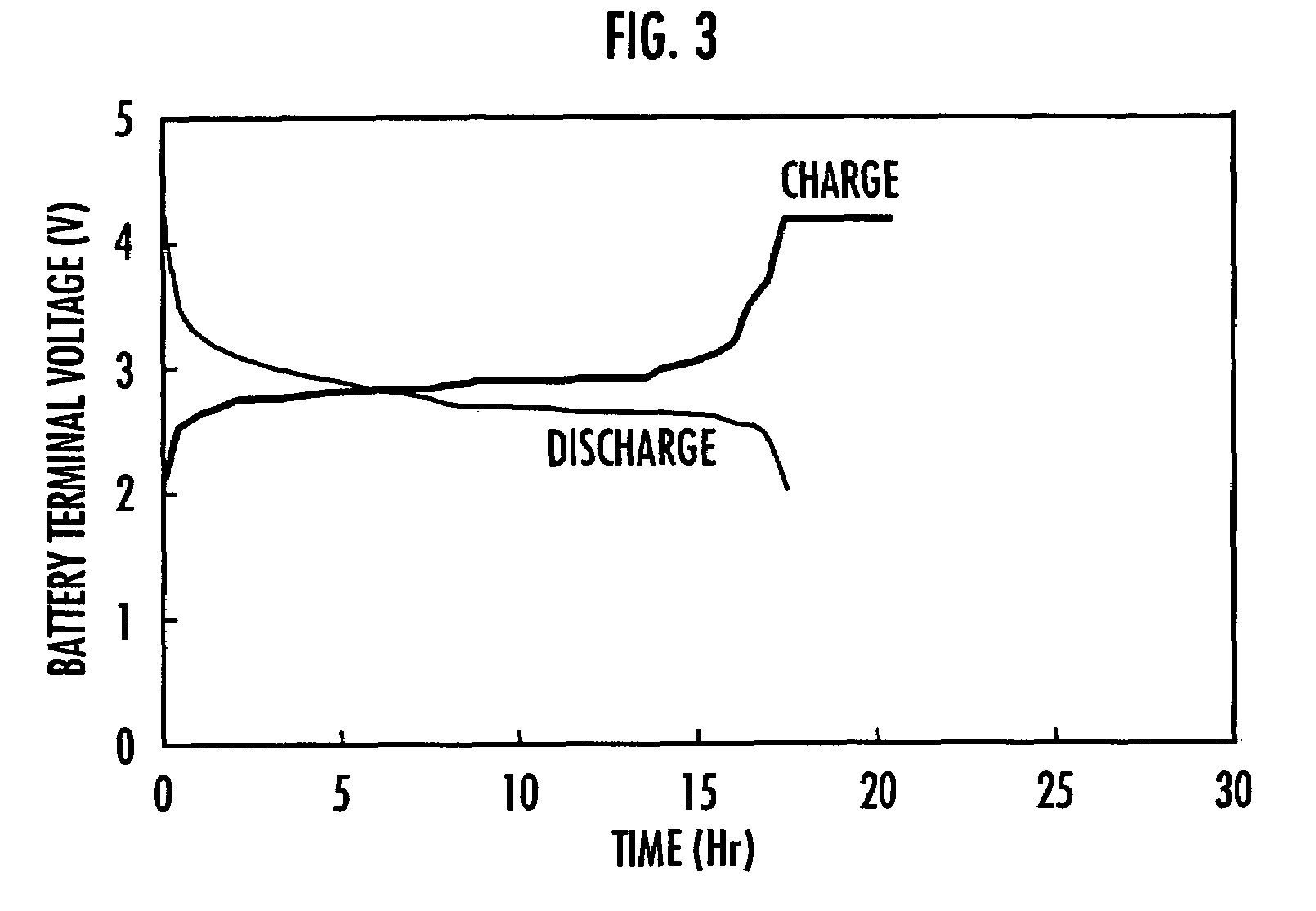Polymer compound for use in electrode material, electrode using the same and nonaqueous solution battery using the same
a polymer compound and electrode material technology, applied in the direction of non-aqueous electrolyte accumulator electrodes, cell components, electrochemical generators, etc., can solve the problems of capacity degradation, the operation temperature needs to be raised to a temperature of 100° c, and the capacity per weight of the positive and negative electrode materials is not necessarily sufficient in a manner, etc., to achieve the effect of large capacity
- Summary
- Abstract
- Description
- Claims
- Application Information
AI Technical Summary
Benefits of technology
Problems solved by technology
Method used
Image
Examples
first embodiment
[0029]Now, the present invention will be described below.
[0030]In the present embodiment, at the beginning, 60 ml of a 33% aqueous solution of sodium hydroxide and 95 ml of chloroform were added to 14.2 g of xanthane hydride (manufactured by Tokyo Kasei Kogyo Co., Ltd.). Under stirring and cooling with ice, a solution of 9.5 g acryloyl chloride dissolved in 40 ml chloroform was added dropwise to the mixture thus obtained over a period of 10 minutes. After 4 hours of stirring, extraction with chloroform was conducted, the organic layer thus extracted was washed with a 10% hydrochloric acid, and successively washed with a saturated aqueous solution of sodium hydrogencarbonate.
[0031]Then, the solvent was dried over sodium sulfate, and thereafter the solvent was removed by distillation under a reduced pressure; the solid content thus obtained was washed with petroleum ether to yield 18.5 g of an acrylamide compound. The reaction concerned is shown in the following formula (II), A in for...
third embodiment
[0056]Now, the present invention will be described below.
[0057]In the present embodiment, at the beginning, 1,2,4-dithiazolidine-3,5-dione represented by the following formula D was synthesized according to the method well known in the art (see U.S. Pat. No. 5,852,168), to obtain about 25 g of a sample. The obtained sample was subjected to elemental analysis, NMR analysis and IR analysis, to reveal that the sample was a substance very high in purity to ensure the structure represented by formula D. An infrared absorption spectrum of 1,2,4-dithiazolidine-3,5-dione is shown in FIG. 4.
[0058]
[0059]Next, 60 ml of a 33% aqueous solution of sodium hydroxide and 95 ml of chloroform were added to 12 g of 1,2,4-dithiazolidine-3,5-dione. Under stirring and cooling with ice, a solution of 11 g acryloyl chloride dissolved in 45 ml chloroform was added dropwise to the mixture thus obtained over a period of 10 minutes. After 4 hours of stirring, extraction with chloroform was conducted, the organi...
PUM
| Property | Measurement | Unit |
|---|---|---|
| voltage | aaaaa | aaaaa |
| temperature | aaaaa | aaaaa |
| temperature | aaaaa | aaaaa |
Abstract
Description
Claims
Application Information
 Login to View More
Login to View More - R&D
- Intellectual Property
- Life Sciences
- Materials
- Tech Scout
- Unparalleled Data Quality
- Higher Quality Content
- 60% Fewer Hallucinations
Browse by: Latest US Patents, China's latest patents, Technical Efficacy Thesaurus, Application Domain, Technology Topic, Popular Technical Reports.
© 2025 PatSnap. All rights reserved.Legal|Privacy policy|Modern Slavery Act Transparency Statement|Sitemap|About US| Contact US: help@patsnap.com



